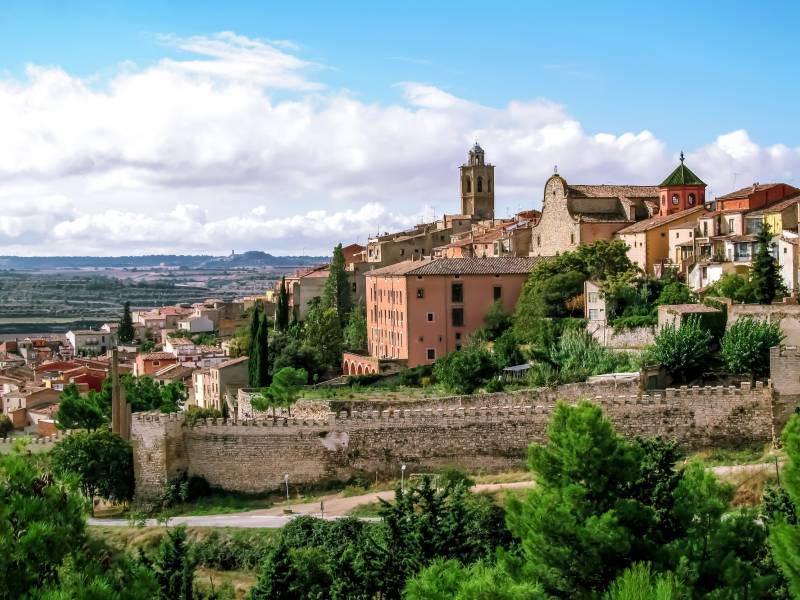In 1026, three farming families settled in the territory of La
Segarra, at that time uninhabited. Later, the
counts of Barcelona confirmed their possession of the land in order to create a first fortress in a land that became the border between Christian and Muslim rule.
Guillem de Cervera was the one who recovered the city in 1035 after it had been occupied by the Arabs, who named it
Hnis Dhervera.Around the 12th century, Cervera grew rapidly in the form of
a closed town .
Felipe V was the one who granted it the title of city in 1702 and created the university there. Cervera became a center of high importance with the privilege of minting coins.
The
historic center of the city brings together the eleven monuments declared
a National Cultural Interest . Through
Carrer Major you will discover a good number of
stately houses from the Middle Ages and at number 15, the old
Hospital of Sant Joan de Jerusalem , from the 12th century, which currently houses the
Museum of Wheat and Farming, all and that the Maltese cross betrays it as a building linked to the order of the Hospitallers.
If you continue until number 64, you will find yourself in front of the
architectural complex of the Company of Jesus . This is the building where
Les Corts met in 1359 to agree on the creation of the
Generalitat and where, a century later, the future
Catholic Kings would sign the marriage capitulations there, in 1469.
A few doors down, at number 79, there is
Casa Delmera , a building linked to the Diputació del General and next to it,
Casa Joan, in Renaissance style. Next, you will be surprised by the
Sant Agustí convent and the
Duran i Sanpere House , currently home to the
Regional Museum.In
Plaça Major , the
church of Santa Maria , from the 15th century, will dazzle you with its Gothic style and its neo-Gothic rear facade. It is also very interesting to discover what remains of the first road
around Cerverí ; a covered alley, formed in the 13th century, when the construction of the new wall left it unused and the houses on Carrer Major decided to expand by literally passing over it. This alley is called
Carrer de les Bruixes , as legend has it that on full moon nights, they gather there.
The
University is undoubtedly one of the symbols of Cervera. It is a baroque and neoclassical building that occupies a surface area of one hectare. After the War of the Succession,
Felipe V closed all Catalan universities and decided to create a new one to control higher education. The University of Cervera replaced all the others from 1717, bringing a moment of splendor to the municipality both economically, intellectually and demographically.
The preserved walls of Cervera are from the Middle Ages and were built, by order of
Pete III the Ceremonious , during the s. XIV and XV. These walls were established on an older fortification from the 13th century, as part of the fortification process of the principal towns of the Principality during the war against Castile. The circuit totaled 3,000 linear meters of walls, with a height of between ten and twelve meters, which framed an area of approximately 200,000 square meters divided into two sectors, north and south of
Santa Anna square . Twenty towers, ten access portals and an eight-metre moat completed the fortification.
